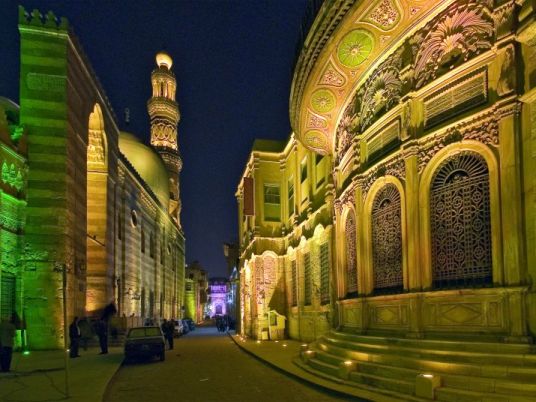
Years ago, I wrote an article in the al-Ahram newspaper entitled “Cairo, this big village.” The description was not entirely mine. It was inspired by another article I read, in a Swiss airline magazine, on board a plane. This article was not lenient on Cairo in any aspect, shape, subject and smell (of Cairo), despite appearing in a tourism magazine to promote the areas to which the company operates flights.
My article in Ahram contained a lot of sorrow, that readers responded to with sadness, about a city that is above all our capital and thus contains a lot of politics. Secondly, it is the place where we lived in the dreams of youth, and in this there is so much history. The common thread between me and the readers was the despair of the current situation in Cairo. However, when the news about the New Capital appeared, I was outraged until the addition of the word Administrative (the New Administrative Capital) which appeared as if it was a real-estate attack on the Historic Capital.
I wrote at that time, decrying the new capital, out of fears for Cairo, fears based in the patterns of new cities that had failed to become capitals, such as Sadat city, but later the knowledge accumulated. It appeared that the Egyptian development thought it had succeeded in creating an integrated intellectual system, that made the new administrative wing necessary for a multi-cultural heritage capital.
When I was honored with an invitation from former prime minister Ibrahim Mahlab to participate in the meetings of the National Committee on Cairo Heritage Development, it appeared that there was not only light at the end of the Cairo’s dark tunnel, but the sun may be shining.
As it happens in all great ideas, it begins with a small seed that gradually grows into an integrated theory. The beginning stage was to maintain the Khedival Cairo area, and then it became the return of life to Cairo heritage in all stages of the capital across the ages Pharaonic, Coptic, Islamic, Fatimid, Ayyubid, Ottoman and modern.
It is no longer a matter of the buildings, streets, historical neighborhoods and architectural systems that speak of the great journey of the Egyptians over a long period of time, but becomes about gardens, the leaves of the trees that speak of what they’ve witnessed from planting, destruction, mountains, desert, rivers and islands.
Soon Cairo is full of people walking in its streets, and while you Khufu on the top of the pyramid, you find Naguib Mahfouz in the streets of al-Gamaleya. It is not true that the devil is always in the details, but beauty is also present amid the many complexities of a complicated capital.
When the governor, Atef Abdel Hamid, holds the celebration for the 150th anniversary of the establishment of Ismaili Cairo (or Khedival), He may authorize the launching of a project that puts Cairo in the right place among the Global capitals.
But this does not happen only with a successful project, or even with several successful projects. The core issue is that residents of Cairo believe they are citizens in a global capital. This only happens through education, and my specific proposal is that there be a school curriculum that students study from the beginning of the primary stage until the end of the secondary stage in all types of public and private schools.
The issue is not only the history of the city, from the very beginning of Memphis until Cairo with all its different varieties (Fustat, al-Qata’i, Heliopolis and others), not even its geography, which stretches into four quarters, but also its figures from scientists, writers and poets, along with all the museums, universities and industries.
The idea of course can be applied in all governorates of Egypt so that we create a national association with a place that breathes not only the past, but also the future. Here is the identity, there is opportunity, as much as the river flows and plant grows, in the city with many neighborhoods and multiple people.
If Naguib Mahfouz glorified alleys (Midaq Alley), and Jamal Al-Ghitani did the same with narrow streets (Waqi’i’ Harat al-Za’farani) and Usama Anwar Okasha made from the Layali el-Helmia (Helmia Nights) a historic procession with feelings and dreams, then today’s students would have their own way of understanding the place and soar to new horizons not known by their parents and grandparents and in line with the age of virtual Internet and spacecraft traveling in the seven heavens. Education creates a direct relationship with the place in all its historical, geographic, demographic, economic, social and political dimensions as well.
Patriotism is not only to distinguish between Us (we) and the other (they), or to identify the magnitude of threats to the country from others who have greed intentions, or even the challenges related to survival, whether natural disasters or foreign invasions. Patriotism in essence is a deep knowledge and pride of oneself, which are not in the end songs, poems and public events, but rather a profound knowledge of this self and its physical and spiritual manifestations. It is a multidimensional relationship with a place that reveals its great secrets not only to the Egyptians but also to their brothers in the Arab region.
I remember that in the early 1990s I was a political advisor in the State of Qatar (Qatar’s relationship with Egypt was not like it is now of treason and hostility) and the month of Ramadan was celebrated in tents set up by all the hotels in Doha, and its names were Layali el-Helmia, al-Sukareya (Sugar Street, Naguib Mahfouz novel) and Qasr al-Shawk (Palace of Desire, Naguib Mahfouz novel). The Egyptian names were shining in the heart of the Qatari capital glowing with arts, literature and civilization -away from Cairo and close to it at the same time!




